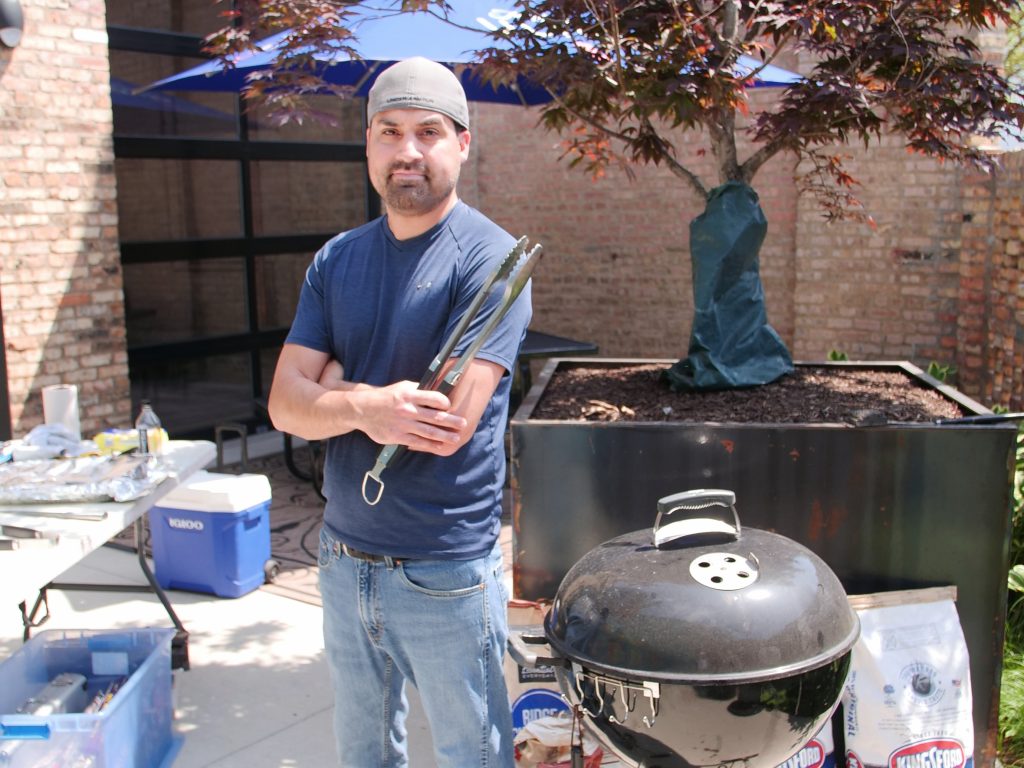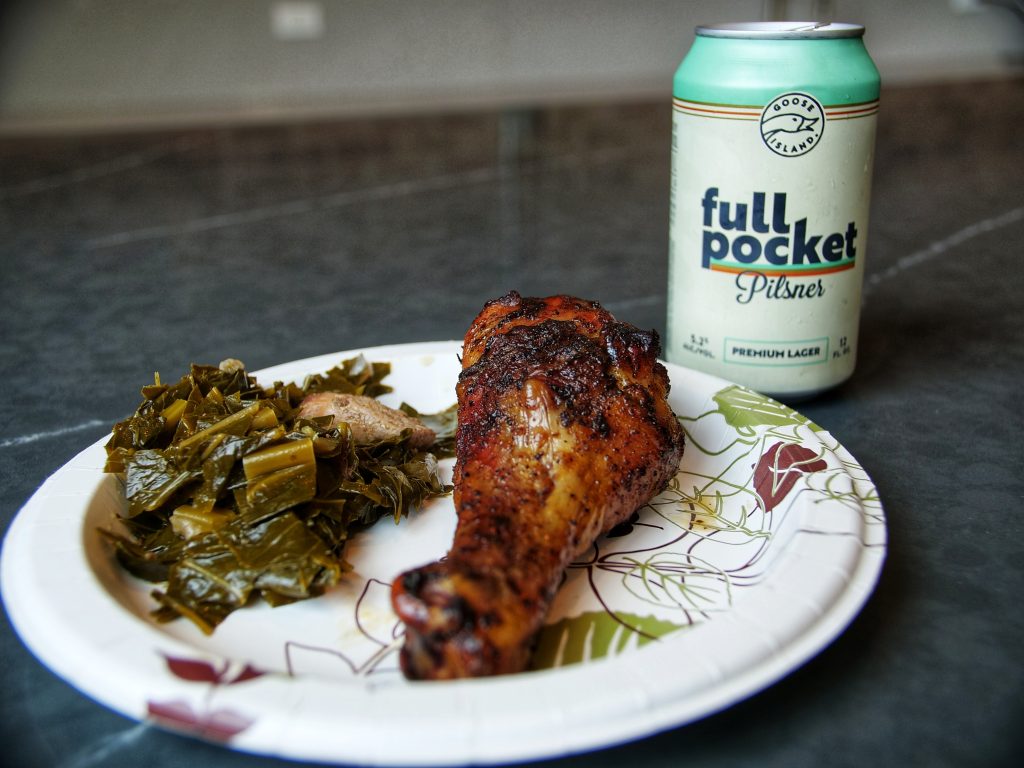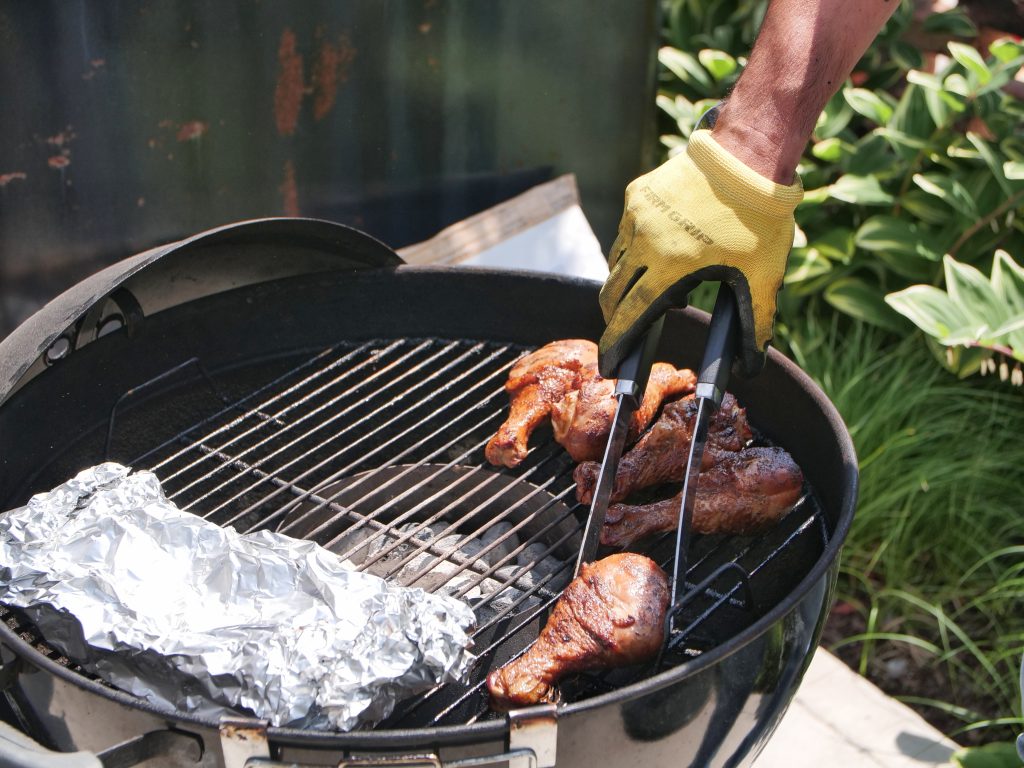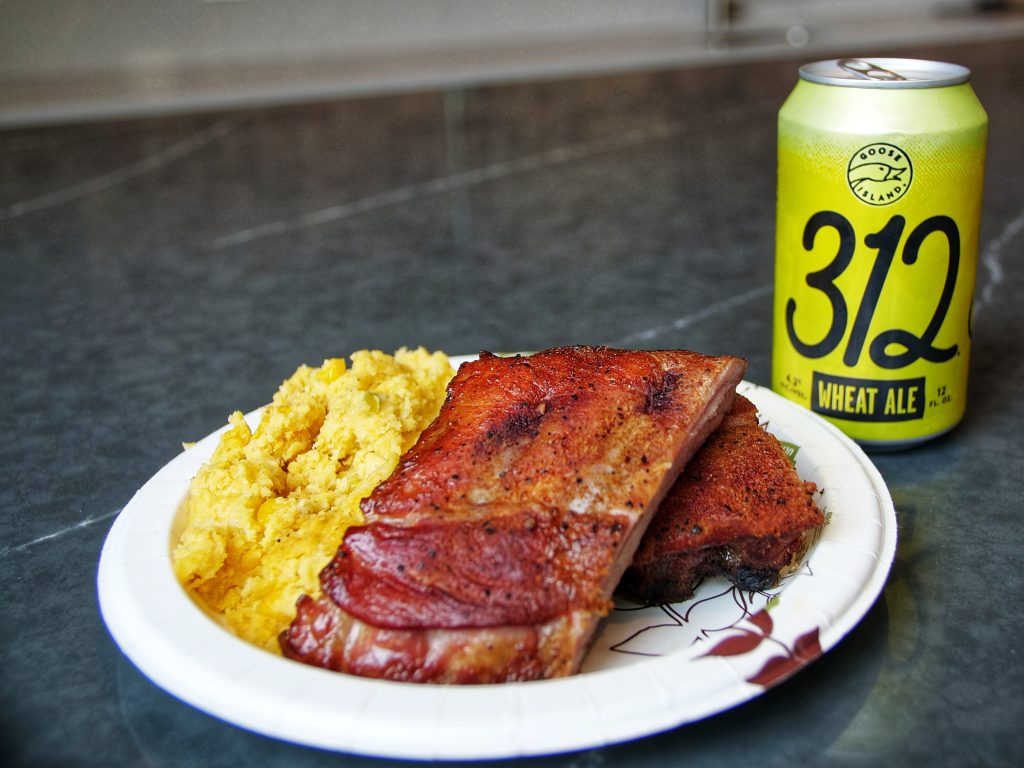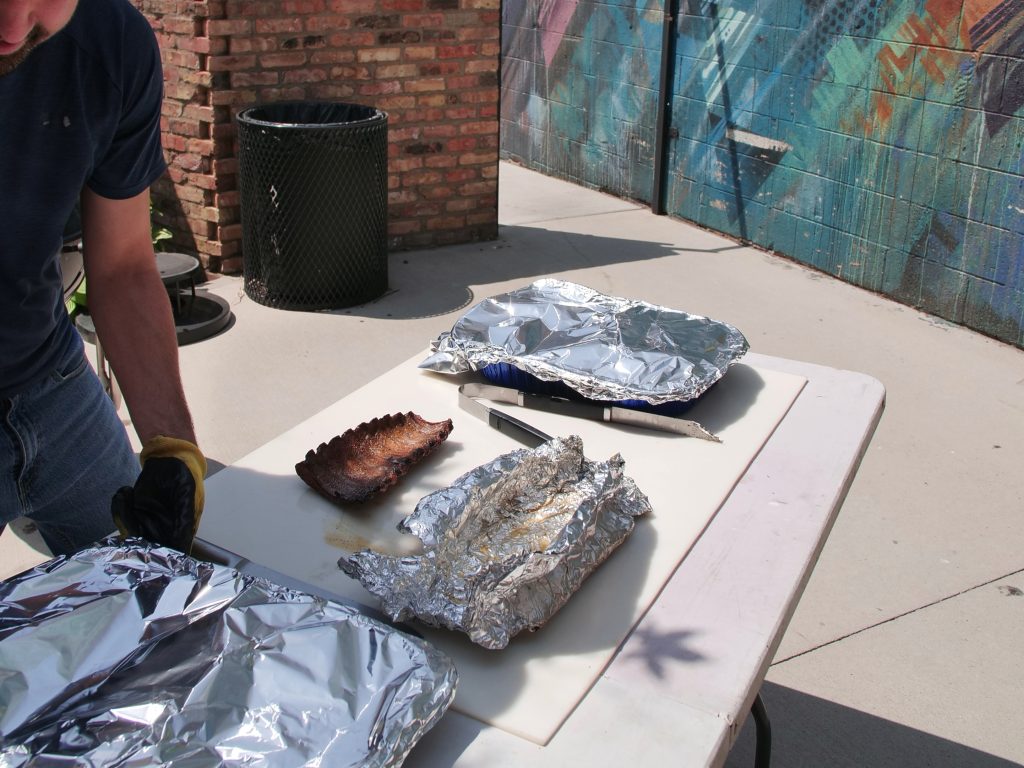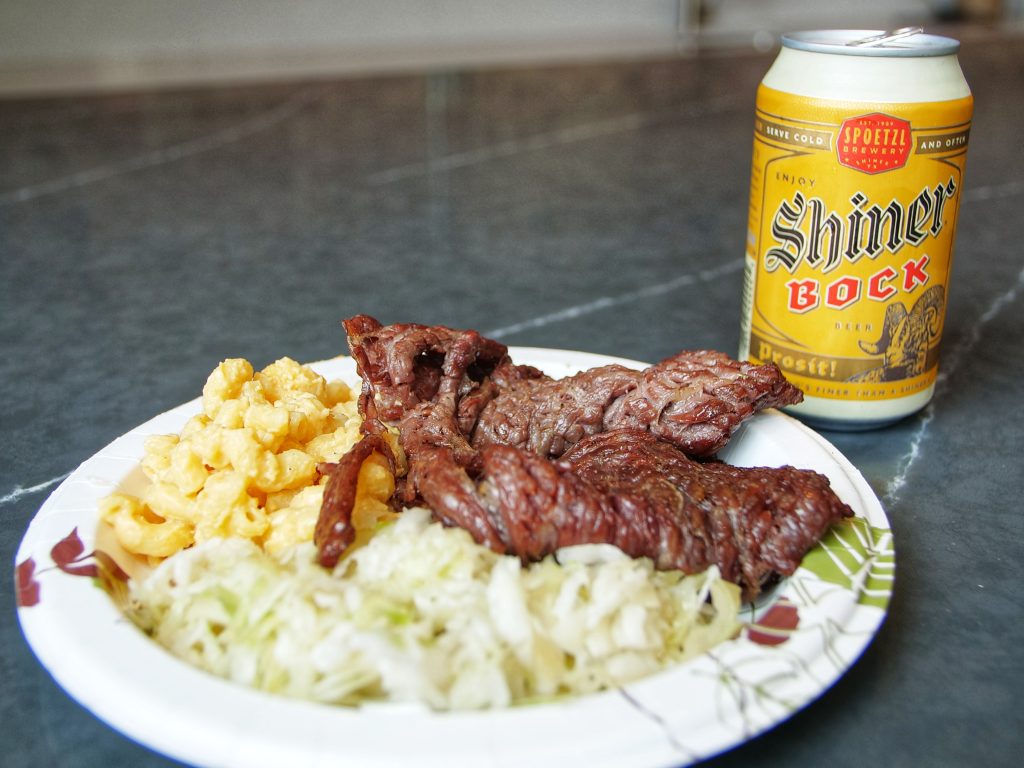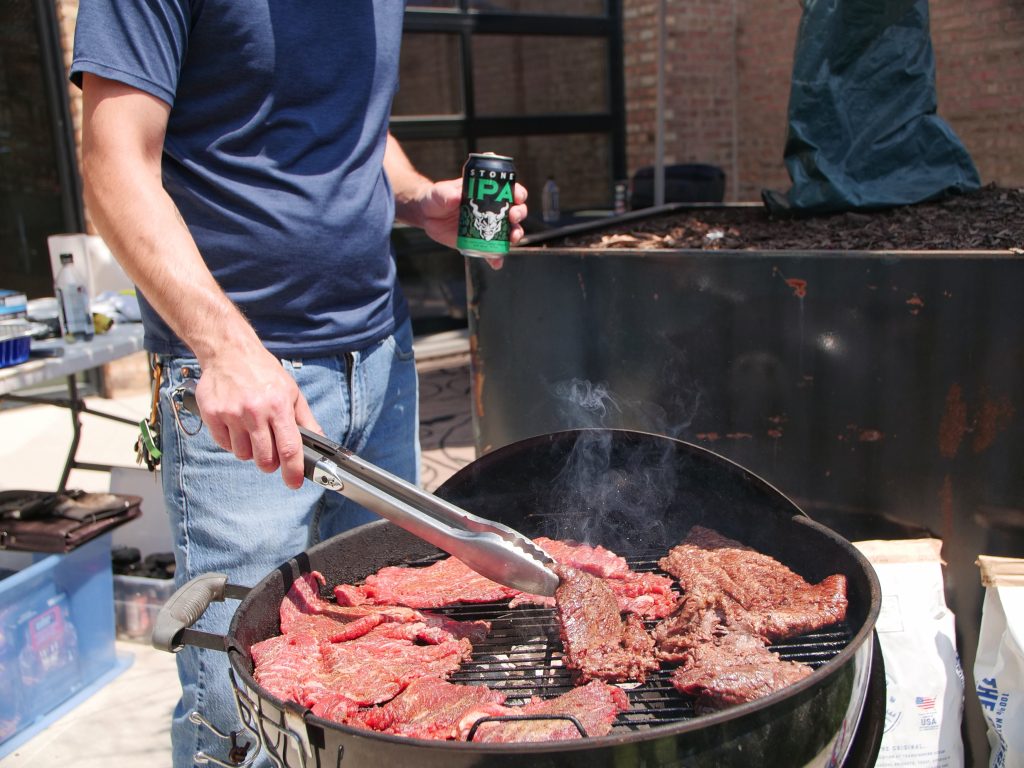Rob Chambers – BBQ Pitmaster
Summer grilling is one of life’s greatest pleasures. It’s primal, a little dangerous, and it creates amazing foods. I like to think of myself as an above average cook but when it comes to grilling, it’s usually a steak, a burger, or some sausages. I haven’t dipped my toes into the world of smoking meats but I always wanted to. Luckily for us, we happen to have an expert at our office.
Rob Chambers, from our HR Department, just so happens to be a professional BBQ pitmaster and we were lucky enough to have him showcase his skills in person. Rob started off like a lot of us – someone who enjoyed BBQ and wanted to learn how to do it. He frequently smoked meat and BBQed.
One day, his friend Jon asked if he would be interested in competitive BBQ. Neither of them had competed before but they wanted to see what it was all about and entered a competition. It’s been about four years since they first competed and they continue to grow and place very highly in the competitions they enter.
I know I’m not the only one who has seen videos online of BBQed meats and wish they could take a bite right then and there. This was my first time being around a pitmaster cooking and he showed me a lot of tips and tricks to get the best end products.
Rob brought in a variety of meats to show what he can do with chicken, pork, and beef.
Chicken Drumsticks
A Goose Island Full Pocket Pilsner is a great compliment to chicken dishes because it’s not an overpowering beer that would mask the flavors of the smoke and chicken
Chicken is ubiquitous and there are so many different ways to prepare it. When I BBQ though, I tend to stay away from it because more times than not, it turns out to be pretty dry and a little bland. When a BBQ pitmaster does chicken however, it is a flavorful and juicy bite every time. Unlike the one flip method that I’ve always been told was the correct way to grill, Rob lets the smoke do the job and makes sure the heat generated is consistent and at the specific temperature he wants.
Rob is ensuring that the heat is evenly distributed all around the drumsticks. The ribs are still wrapped in foil to keep the meat extra juicy
Rob says –
Prior to grilling, the chicken is cleaned and trimmed. Meaning, it is rinsed off with water to freshen the meat. Using a knife or scissors, the chicken is trimmed to remove any excess skin or bone. Next, a dry rub would be added to coat the entire piece of chicken to ensure even flavor distribution. It would be preferred to let the dry rub set into the chicken for at least 30 minutes prior to adding it on the grill. There is not much flipping with chicken, however rotation does help.
BBQ Pork Ribs
Wheat Ales like Goose Island 312 are a perfect choice for pork dishes. The flavors of the beer can cut through the fattiness of the meat.
I have loved ribs since I was a young boy watching the Flintstones car tip over on TV. I will order ribs the majority of the time if they are available. I have had them in all different styles in my travels but there is something very special about BBQed ribs because many times, the sauce is usually the prevailing flavor. The way pitmasters like Rob make them however, has the meat as the prevailing flavor enhanced by the aromas of smoke.
The ribs being unwrapped and portioned. Rob says that in professional BBQ, butter is used heavily to amplify flavors, give a glossy look, and to maintain the juices in the meat.
Rob says –
Same process as chicken for clean and trim. However, most ribs have a thin layer of membrane that will need to be removed on the back end of the rib. This can be done by pulling it off with a spoon and paper towel. From there, dry rub would be added to both sides of the meat and smoked with hickory wood. A few flips would help with the ribs, however once they have a good color on them, they would be wrapped in aluminum foil with butter and honey until they are at the right internal temperature.
Skirt Steak
Red meat and bocks are a great match. Bocks like Shiner Bock can match the richness of beef and compliment its flavors very well.
The skirt steak was chosen because it’s a thinner cut of beef that would cook faster for all the hungry people at our office but many of the principles here work for thicker cuts too. While the chicken and ribs rested, I was able to observe Rob cooking the steak and ask some of the questions that I had.
First, I noticed that he was only using charcoal; I asked why he didn’t use propane (and propane accessories). It’s the kind of grill I have in my backyard and they seemed to be the most popular. Rob really likes the flavors charcoal imparts and he says he can actually taste the gas when it’s cooked on a gas grill. Maybe it’s because I grew up eating stuff made off gas grills but I couldn’t quite put my finger on what gas flavor he was talking about. If you notice those flavors, this may be the method of grilling you’ve been looking for!
Rob also showed me how to cook with an indirect heat method. The meat was never directly above the coals and he tried to keep the lid on the grill closed as much as possible. This ensures a nice even cook through and avoids the dreaded grey layer on steaks. I always liked a nice sear and char on my steaks but Rob’s steaks came out looking very different than what I make at home. It had a very appetizing browning and in certain lights, had the brighter red tones you might see in jerky. This got me wondering, “what do judges at BBQ competitions actually looked for?” Rob explained to me that although taste is very important, they are scored on consistency in competition. They will grill multiple pieces of meat but they pick the best looking piece(s) and send it in for judging. It has to look great, taste great, and have the perfect “chew” on it.
Steaks can be flipped multiple times and keeping them off the direct heat of the coals creates a much more even doneness – albeit it may take a little longer than direct flame. Stone IPA is a great choice for grilling and also a great pairing for steaks as well.
Rob says –
[When it comes to the perfect chew] it would be preferred to have a perfect bite through. This means that once you bite into the meat, there is barely any pull and [for chicken] you are taking skin with you on the chew. Basically like biting into a piece of bread and seeing your teeth marks.
I learned a lot from Rob and after talking to and watching him grill, I am excited to try his methods at home this 4th of July. Although mastering grilling will be very difficult, talking to Rob showed me it wasn’t quite as intimidating to start. It might be a while before I am confident enough to try my hand at the more expensive cuts of meat but I am looking forward to the day when I can smoke me some beef ribs and channel my inner Fred Flintstone.


